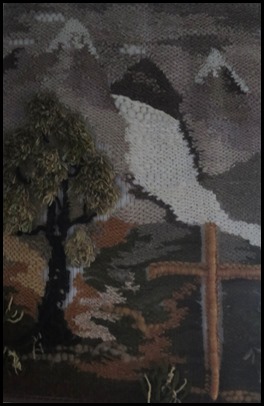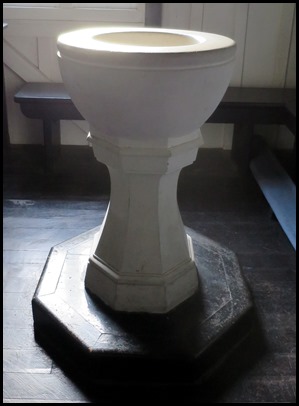St. James

|
St. James Anglican Church,
Franz Josef
 Returning from our Franz Josef
Glacier visit, just before we crossed the bridge. This little building really
stood out in the afternoon light. Just over the bridge there was a sign that
said St. James Historic Church. We had to go and
look.
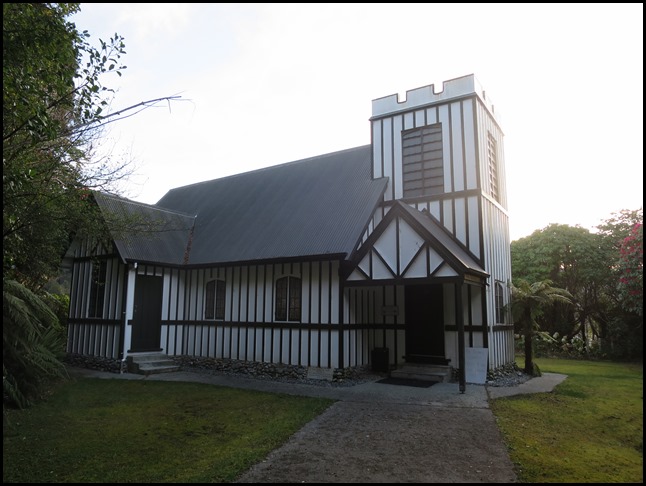 What a lovely
building, how thrilled were we to see an ‘open’ sign.
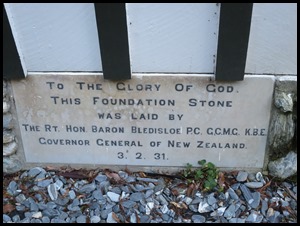 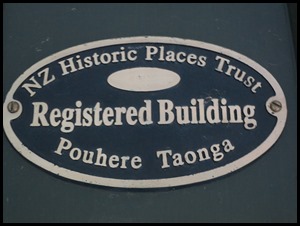 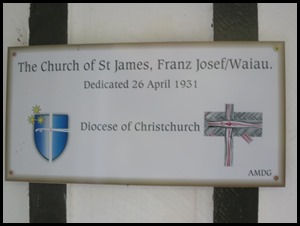 Up closer we could see some of the history.
1925: The idea of
a church at Waiho, as Franz Josef was then known, was the result of a dream of
the Reverend James Young – “......a little plain stone church built of round
stones from the Waiho riverbed and a roof of shingles”. The church was to placed
in a unique setting of abundant bush and wonderful snowy peaks.Although there
was much enthusiasm, this idea was regretfully abandoned because of prohibitive
costs.
1927: In June,
Dean Julius visited Waiho as rural dean of Westland, and suggested a church of
heavy upright planks of wood with a plate glass window framing a magnificent
view of the glacier and mountains. These plans were prepared by architects J.S.
Turnbull 1864-1947 and P.W. Rule 1888-1953, of Timaru in
1928.
1929: The
Reverend A.K.Warren arrived, with Canon Newton’s gifts, a brass cross,
candlesticks, chalice and paten.
1931: On the 3rd
of January, the foundation stone was laid by Governor General, Lord Bledisloe.
The builders Messrs. Bullock and Stewart, completed the building of the church.
The final cost of 1,400 pounds was given by local people, tourists, and interested
friends of the church. On the 26th of April, the Lord Bishop of Christchurch,
Campbell West-Watson, dedicated the new church. The details of the furnishings
and colour scheme are the work of the vicar, the Reverend James Young, some say
the church was named because of the parishioners’ affection for the Rev. James
Young, without whose vision the church may not have been built at all.
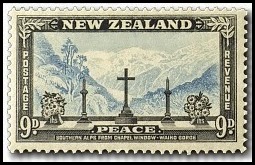 1946: The Post Office issued the
“Peace” stamp, with the view of the Franz Josef Glacier and the Southern Alps
through the altar window. This expressed the spirit of thankfulness for the
ending of the Second World War.
1953: The Franz Josef Glacier, in
common with others in temperate zones, had been receding for some time. In this
year it it finally withdrew from sight of the altar window.
1970’s: The repair and upkeep of an
aging wooden church which leaks and needs regular painting, is a
responsibility.
1994: In April this year the glacier
reappeared into view from the altar window.
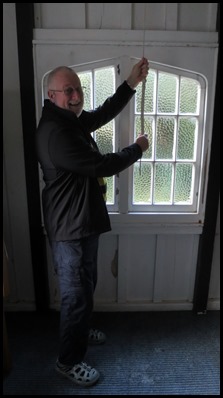  Inside the cutest
bell rope ever.
 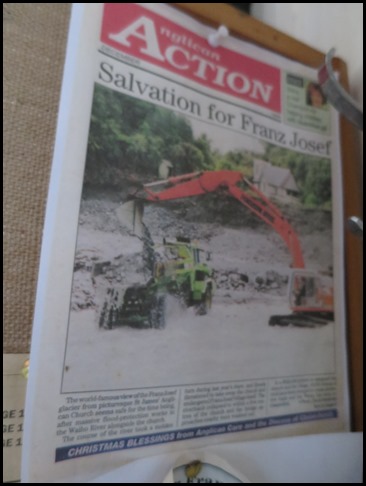 The notice
board was dedicated to telling the story of how the risk of floodwater
could have ruined the church until workmen came and built flood
defences.
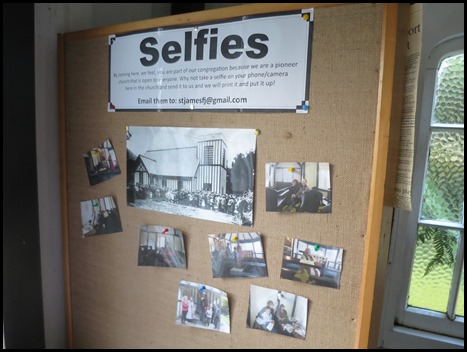 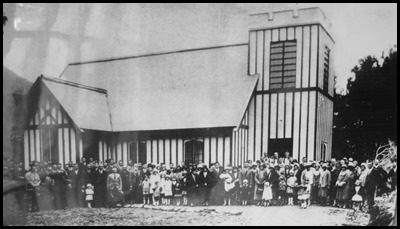 Another board
featured selfies, asking for visitors to send in theirs, what
fun.
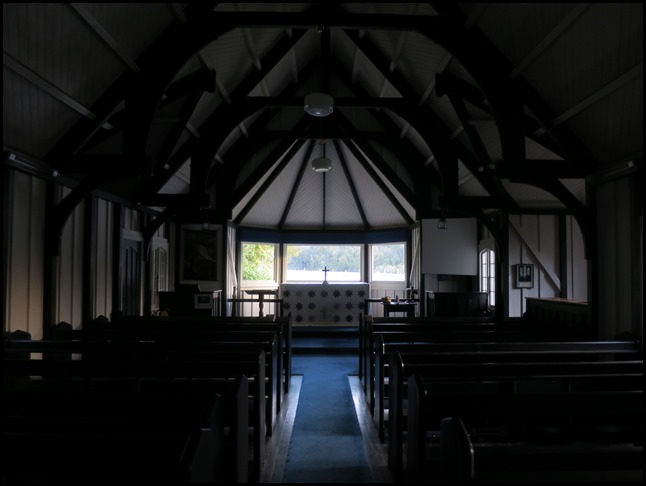 Once inside you are drawn to the main window behind the altar.
  So simple
but so perfect.
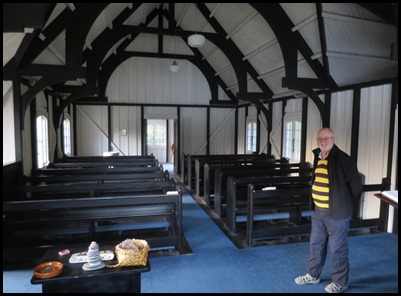 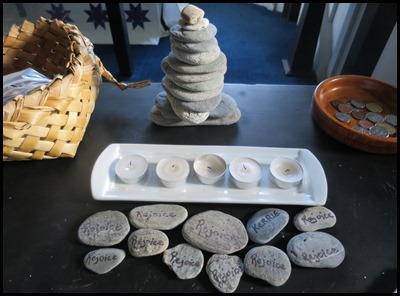 The other gorgeous thing to see was
the collection plate, in view, and
unmolested.
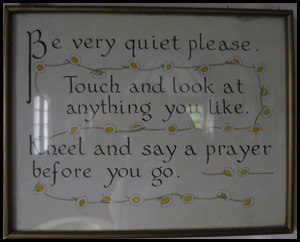   We bimbled looking at
things on the wall. Then............
 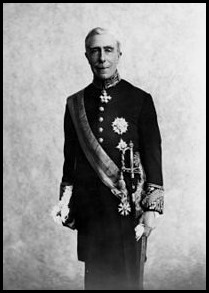 The Franz Josef
Window, St. Mary Church, Lydney, Gloucestershire, England. This window
was commissioned by Lord Bledisloe for his private
chapel on his return home after his time as Governor of New Zealand in the early
1930’s. How incredible, in fact, spooky I would
say. Lydney is exactly nineteen point seven miles from where Bear
was born.
Charles Bathurst, 1st Viscount Bledisloe, GCMG, KBE, PC was born in London on the 21st of September 1867, educated at Sherborne School, Eton and then University College, Oxford, where he studied law and graduated with a BA in 1890. Charles worked as a barrister and conveyancer and in 1910 entered parliament representing the Conservative Party as MP for the South of Wilton division of Wiltshire. After serving as Parliamentary Secretary to the Ministry of Food, Bathurst was appointed a Knight Commander of the Order of the British Empire (KBE) in 1917, and raised to the peerage as Baron Bledisloe, of Lydney in the County of Gloucester. He remained in parliament until 1928, serving as Parliamentary Secretary to the Ministry of Agriculture and Fisheries from 1924 onwards, and was a member of the Privy Council from 1926. After leaving parliament, Lord Bledisloe was created a Knight Grand Cross of the Order of St Michael and St George and appointed the fourth Governor-General of New Zealand, an office he held from 1930 until 1935, proving to be extremely well liked and respected. His social conscience was much appreciated during the Depression era, as was his insistence that his salary should be cut as were the salaries of public servants at the time.Bledisloe also contributed to improved Pākehā – Māori relations, purchasing the site where the Treaty of Waitangi was signed and presenting it to the nation as a memorial. In 1934, the site was dedicated as a national reserve. The dedication ceremony attracted thousands of people, both Māori and Pākehā. Bledisloe continued to take an interest in the site even after his term expired and he returned to England. Bledisloe also contributed to the recognition of the Māori King Movement by developing a friendship with King Koroki and Te Puea Herangi, and his willingness to use the title "king" without reticence. Lord Bledisloe also promoted various causes and events by the presentation of trophies, the most famous of these being the Bledisloe Cup, the trophy for an ongoing rugby union competition between New Zealand and Australia, first awarded in 1931, and currently contested annually. Back in Lydney he continued to serve on a number of committees and councils, was awarded honorary doctorates from the universities of Bristol, Edinburgh and Oxford, and was made a fellow of University College, Oxford. Lord Bledisloe died, aged 90, at Lydney on the 3rd of July 1958, and was succeeded as Viscount Bledisloe by his eldest son, Benjamin Ludlow Bathurst.
Tapestry of the glacier and Baptismal Font. Everything looked at, sadly, time to leave. 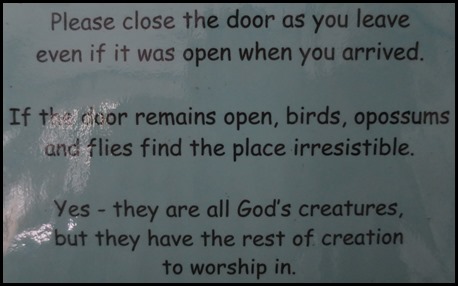 We loved the
little sign by the door on the way out.
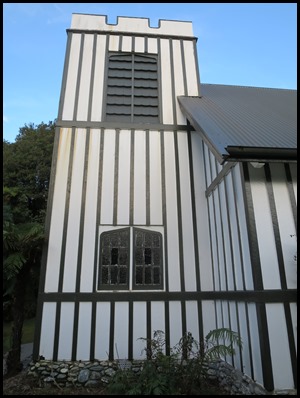 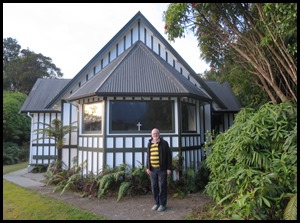  Outside we walked all round and
thought the building looked well cared
for.
 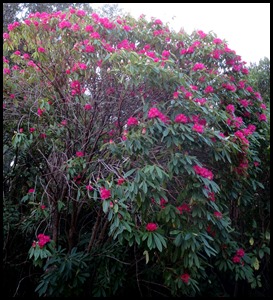 Spring has sprung
in the tiny garden.
 Time to say
‘farewell’.
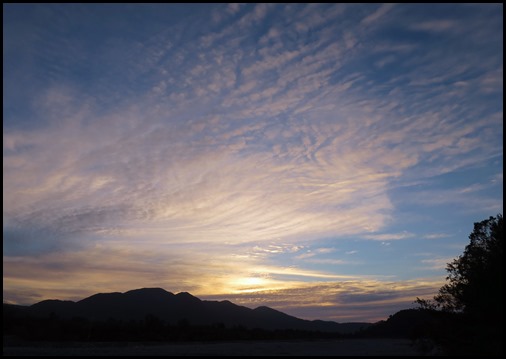 Back aboard Mabel, our first sunset in ages.
ALL IN ALL A JOYFUL CHURCH
WITH AN AMAZING VIEW
VERY QUANT AND
WELCOMING |
